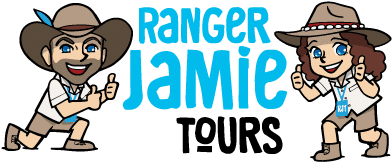
Science
Syllabus Outcomes SC5-14LW SC5-15LW
$29.00
1x Teacher free per x30 students (Yr 7-10)
$38.00 per additional Teacher/Parent
+GST. As this program is an educational service, all GST charged can be reimbursed in its entirety by the Government. This price excludes transport. (Minimum charge of x35 students).
About
Go in-depth at Symbio Wildlife park to discover the techniques and equipment that modern zoologists and scientists are using in conservation and biotechnological research. On this interactive and up close day of encounters, students will witness first-hand the approaches that Symbio Wildlife Park and other captive animal facilities use in Australia through in-focus activities with our expert Rangers.
Syllabus Outcomes Addressed
SC5-14LW analyses interactions between components and processes within biological systems
SC5-15LW explains how biological understanding has advanced through scientific discoveries, technological developments and the needs of society

Arrive/Depart
Full Day Excursion (4 Hours) 10am – 2pm
Time allocation for excursions can be tailored and adjusted to suit your individual school timetable and scheduling.
Bus Drop Off / Pick Up Location
Bus Drop Off Location
10am at Symbio Wildlife Park 7-11 Lawrence Hargrave Dr, HELENSBURGH NSW 2508 (bus to pull into car park outside entrance)
Bus Pick Up Location
2pm at Symbio Wildlife Park 7-11 Lawrence Hargrave Dr, HELENSBURGH NSW 2508 (bus to pull into car park outside entrance)
Transport
Would you like our help with transport? We can suggest a range of transport providers to help source and book a transport quote for you! We would highly recommend that you book directly through the transport providers.
Please be aware that we provide transport quotes as a service to help make your booking process easier for you. Transport companies are in no way affiliated with Ranger Jamie Tours.
What's Included
 |
 |
Syllabus Content Focus
LW1 Multicellular organisms rely on coordinated and interdependent internal systems to respond to changes in their environment (ACSSU175)
Students:
- Describe some examples of how multicellular organisms respond to changes in their environment
- Describe how the coordinated function of internal systems in multicellular organisms provides cells with requirements for life, including gases, nutrients and water, and removes cell wastes
- Discuss, using examples, how the values and needs of contemporary society can influence the focus of scientific research, eg the occurrence of diseases affecting animals and plants, an epidemic or pandemic disease in humans or lifestyle related non-infectious diseases in humans
LW2 Conserving and maintaining the quality and sustainability of the environment requires scientific understanding of interactions within, the cycling of matter and the flow of energy through ecosystems.
Students:
- Recall that ecosystems consist of communities of interdependent organisms and abiotic components of the environment (ACSSU176)
- Analyse how changes in some biotic and abiotic components of an ecosystem affect populations and/or communities
- Assess ways that Aboriginal and Torres Strait Islander Peoples’ cultural practices and knowledge of the environment contribute to the conservation and management of sustainable ecosystems
- Evaluate some examples in ecosystems, of strategies used to balance conserving, protecting and maintaining the quality and sustainability of the environment with human activities and needs
LW3 Advances in scientific understanding often rely on developments in technology, and technological advances are often linked to scientific discoveries.(ACSHE158, ACSHE192)
Students:
- Identify that during reproduction the transmission of heritable characteristics from one generation to the next involves DNA and genes(ACSSU184)
- Identify that genetic information is transferred as genes in the DNA of chromosomes
LW4 The theory of evolution by natural selection explains the diversity of living things and is supported by a range of scientific evidence.(ACSSU185)
Students:
- Describe scientific evidence that present-day organisms have evolved from organisms in the past
- Explain, using examples, how natural selection relates to changes in a population, eg in the development of resistance of bacteria to antibiotics and insects to pesticides
- Outline the roles of genes and environmental factors in the survival of organisms in a population
Additional content
Students:
- Debate why any investigation relating to biological research and involving or affecting animals, must be humane, justified and ethical
- Investigate how models can be used to predict the changes in populations due to environmental changes, eg the impact of fire or flooding, introduction of a disease or predator
- Describe examples of advances in science and/or emerging science and technologies, in areas that involve biological science such as dentistry, environmental science, biomedical engineering, physiology, pharmaceuticals or nanotechnology
Day Outline
| Arrival / Morning Tea in Amphitheatre / Toilet Break (approx. 20 minutes) |
|
| Introductory Presentation | The day kicks off with a meet and greet with our enthusiastic Rangers before enjoying your exclusive and interactive live animal presentation. (approx. 30 minutes) |
| Grouping: Students are divided into groups of approximately x 30 students and allocated a Ranger guide for each walk. | |
| Native and Exotic Animal Walk | Students participate in this walk for approx. 45 minutes. Your own private Ranger Guide included. |
| Lunch / Toilet Break (approx. 25 minutes) |
|
| Native and Exotic Animal Walk | Students participate in this walk for approx. 45 minutes. Your own private Ranger Guide included. |
| CASE STUDY | Students conduct a case study focusing on a breeding program, scientific technology or animal at the wildlife park. This activity lasts for approx. 45 minutes. |
| Wrap Up / Conclusion / Toilet Break (approx. 20 minutes) |
|
Activities
Booklet activities include:
A student activity booklet is written and provided by Ranger Jamie Tours. A PDF version of this booklet will be made available to you upon your booking confirmation, for you to distribute in soft and/or hard copy to your students depending on your preference.
- Two completed guided tours;
- Exotic and Native Australian Animals Walk 1: Embark on a private guided tour with our expert rangers of the public enclosures at Symbio Wildlife Park, observing the animal husbandry practices in place for different species
- Exotic and Native Australian Animals Walk 2: Embark on a private guided tour with our expert rangers of the public enclosures at Symbio Wildlife Park, observing the animal husbandry practices in place for different species
- Exotic and Native Australian Animals Walk 1: Embark on a private guided tour with our expert rangers of the public enclosures at Symbio Wildlife Park, observing the animal husbandry practices in place for different species
- Case study – at the conclusion of the day, students will conduct an in-depth case study on one of the animals at Symbio Wildlife park, focusing on either breeding programs, natural selection, keystone species or zoological technologies and techniques
$29.00
1x Teacher free per x30 students (Yr 7-10)
$38.00 per additional Teacher/Parent
+GST. As this program is an educational service, all GST charged can be reimbursed in its entirety by the Government. This price excludes transport. (Minimum charge of x35 students).

Choose Your Date
Step 1 of 3
Please note this is a tentative booking. After your booking request is submitted, we will be in touch via email to confirm the requested date and arrange the final details for the booking.

